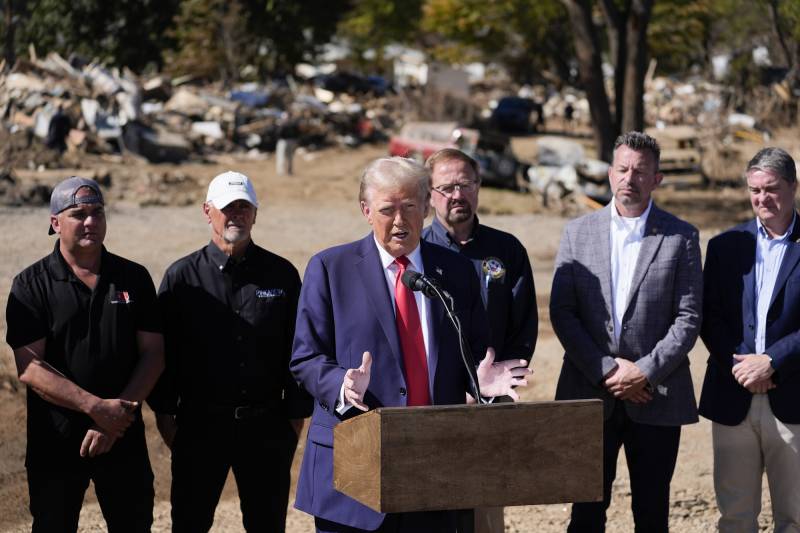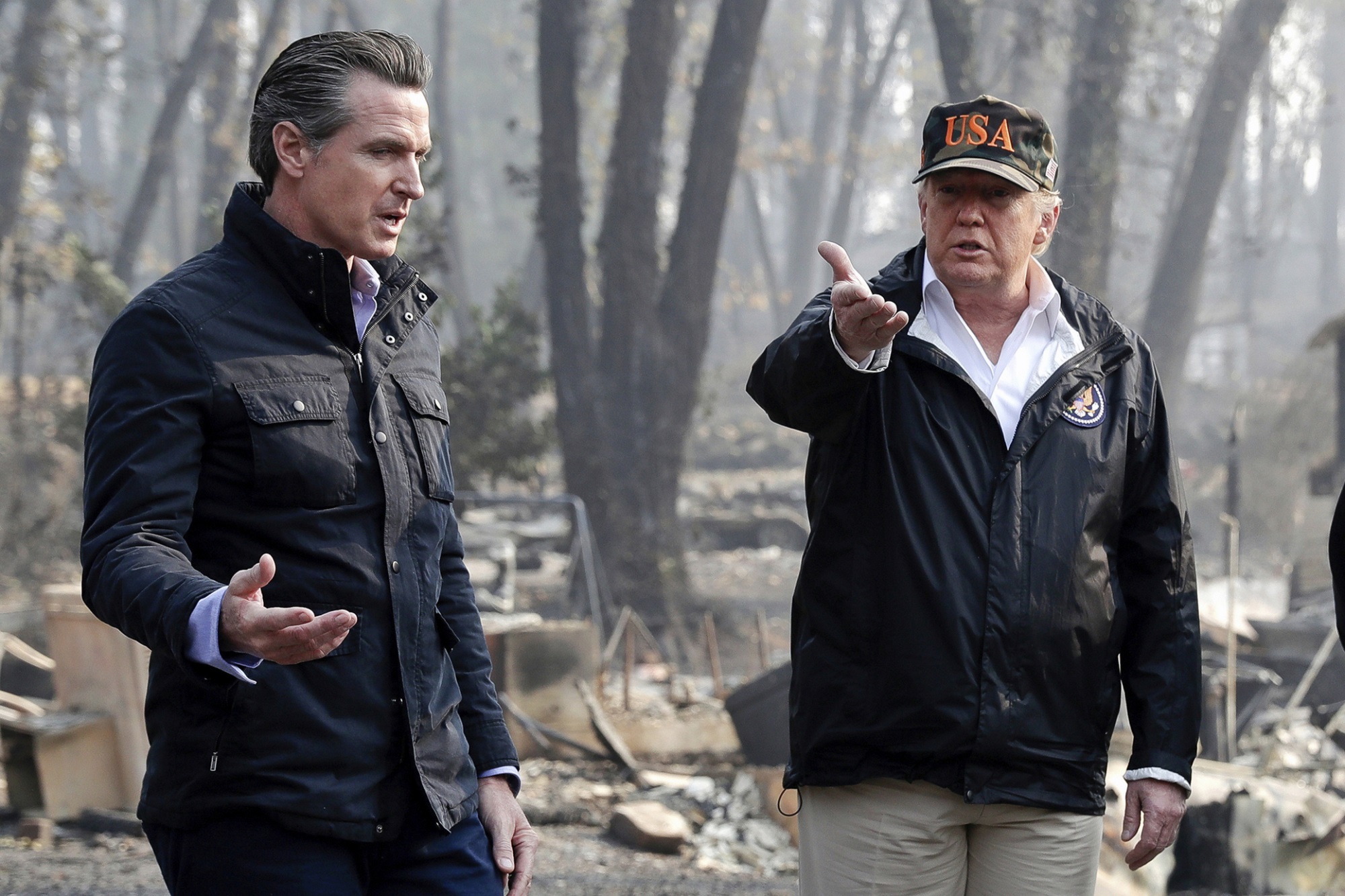Then, the governor reaches out to the Federal Emergency Management Agency and requests a disaster declaration. FEMA has various guidelines before making such a recommendation, including assessing the extent and severity of damage and an estimate of how much funding is needed.
Once FEMA has recommended a disaster declaration, it goes to the secretary of Homeland Security (Trump has nominated South Dakota Gov. Kristi Noem for that position), who sends it on up to the president to approve or deny.
“The problem is that this whole process, once you get above FEMA to the Department of Homeland Security and between the president, those conversations are executive privilege, so we can’t analyze what’s going on there,” said Matt Sedlar, a climate analyst at the Center for Economic and Policy Research who researches disaster relief aid. “It could just be a political decision.”
During his first term in office, Trump sought to deny wildfire recovery aid to California on multiple occasions. In 2018, as the Camp Fire became California’s deadliest on record, Trump resisted providing aid because of the state’s Democratic leanings, according to Politico. He reportedly changed his mind after his aides pulled data showing how many people voted for him in the affected areas.
And in 2020, in the aftermath of six major wildfires that burned across the state, the Trump administration initially denied the state aid, saying the disaster declaration was “not supported by the relevant data.” It eventually reversed that decision.
“Why would he punish any American really reeling from a natural disaster?” Democratic Rep. Jared Huffman, who represents parts of the North Bay and California’s North Coast region, said in an interview this week with KQED. “It’s just so despicable. But that’s likely to be what we’re up against, and we’ve got a few strategies that we’re developing to deal with it.”
Huffman, whose district has been faced with historic wildfires in recent years, said he’s been in talks this week with Newsom and colleagues in California’s congressional delegation about disaster aid contingency plans for Trump’s second term.
“Basically, how California can backfill and protect things that we care about and how we are going to navigate some of these likely confrontations going forward,” he said.
Newsom is looking to establish a fund he can draw from in the event of a natural disaster, he said in an interview with Politico. He’s expected to introduce the funding as part of his budget proposal in January.


